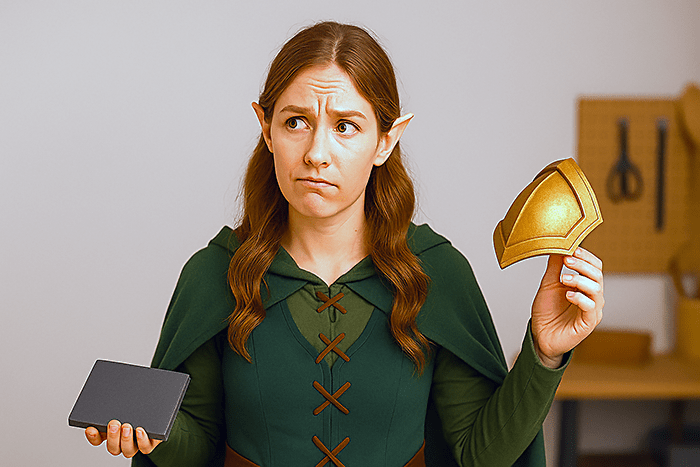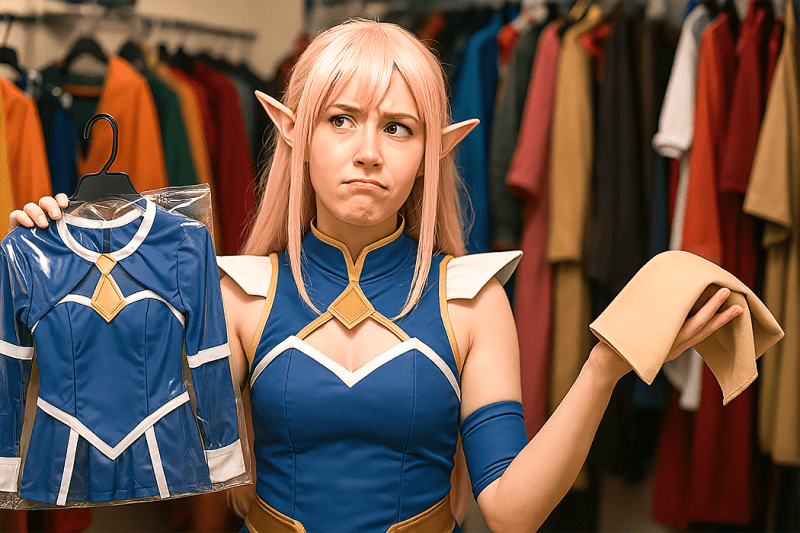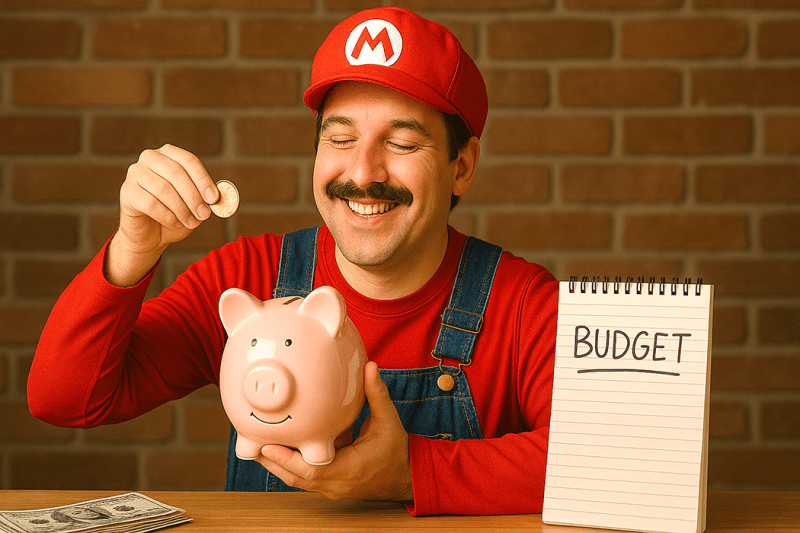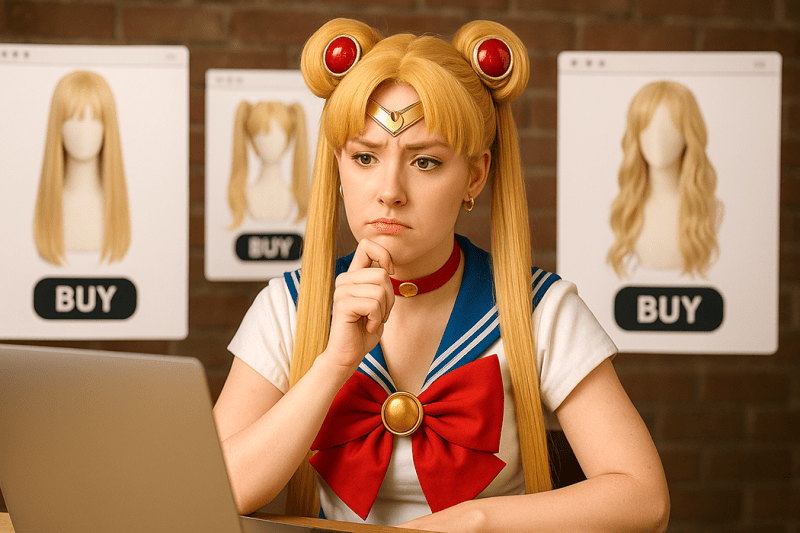Key Takeaways:
- EVA foam is typically better for beginners because it's affordable, lightweight, and easier to work with
- Worbla creates more durable and detailed armor pieces but costs more and requires additional skills
- Many cosplayers use both materials together: EVA foam for larger sections and Worbla for intricate details
- Choose your material based on your project requirements, budget, and skill level
Picking the right material for your first cosplay armor project can seem overwhelming. At Lauren's Mystic Marketplace, we know that starting with appropriate materials significantly impacts whether your experience will be frustrating or rewarding.
EVA Foam: The Beginner-Friendly Option
1. Affordability: Why Your Wallet Will Thank You
EVA foam costs much less than Worbla, making it ideal for beginners not ready for a major financial commitment. You can buy EVA foam floor mats for just $10-20 per pack, giving you freedom to practice without worrying about costly mistakes. Even higher quality craft foam sheets from hobby stores remain affordable compared to thermoplastics.
2. Ease of Use: Perfect for First-Time Armor Makers
EVA foam is very forgiving for beginners. You can cut it easily with basic tools like utility knives or scissors, and shape it using a heat gun or sometimes even a hair dryer. The basic techniques are straightforward, allowing new cosplayers to create impressive results on their first try.
When I made my first EVA foam pauldrons, I was surprised by how quickly I went from pattern to finished piece. You can trace patterns directly onto the foam, cut them out, and heat-form them into shape in a single afternoon.
3. Weight Factor: Comfort During Long Convention Days
EVA foam's light weight makes it perfect for convention wear. During those 8-10 hour days walking around a convention center, every ounce matters. Armor made from EVA foam won't burden you, so you can enjoy your cosplay experience without physical discomfort.
Consider this - you don't want to remove pieces of your costume halfway through the day because they're too heavy or uncomfortable. EVA foam helps you avoid this common cosplay problem.
4. The Finishing Process: Getting That Professional Look
While EVA foam needs finishing work to achieve a smooth, professional appearance, the process is straightforward. Here are the essential supplies for a polished finish:
- Primer/Sealer: Products like Plasti Dip, Flexbond, or EVA foam sealers
- Sandpaper: Various grits (150-400) for smoothing edges and surfaces
- Paint: Acrylic paints or spray paints compatible with your sealer
- Clear coat: To protect your paint job and add shine if desired
- Respirator mask: Essential for protection during sanding and sealing
The sealing step prevents paint from cracking when the foam flexes. After applying 2-3 thin coats of sealer, you can paint with standard acrylics or spray paints. Building up color in multiple thin layers gives the best results without hiding details you've worked hard to create.
5. Durability Concerns: Potential Weaknesses to Consider
Let's be honest—EVA foam has limitations. It can dent, crease, or tear, especially at thin or stress points. I once spent hours on a beautiful EVA foam shield that developed a nasty crease after someone accidentally sat on it in a crowded convention hallway.
For conventions and photoshoots, these durability issues usually aren't dealbreakers, but consider them if you plan to wear your cosplay frequently or during active events. Strategic reinforcement at stress points can help address these concerns.
Worbla: When to Level Up Your Cosplay Game
As you grow more confident in your cosplay crafting, you might want to try Worbla. This thermoplastic opens up new possibilities—but requires learning additional techniques.
1. Superior Durability: Built to Last
Worbla's outstanding feature is its exceptional durability. Once heated and shaped, it creates a hard shell that withstands significant wear and tear. I've seen Worbla armor pieces survive multiple conventions, being packed in suitcases, and even light combat choreography without showing significant damage.
If you're creating a cosplay you plan to wear repeatedly or one that might face rough handling, Worbla's strength is a major advantage over foam alternatives.
2. Detail Work: Creating Intricate Designs
For fine details and intricate designs, Worbla truly stands out. It can be molded into complex shapes with precise edges that would be difficult to achieve with foam alone. The material can capture textures from molds and holds sharp details remarkably well, making it perfect for ornate armor pieces like filigree work or scaled textures.
3. Mistake-Friendly: The Reheating Advantage
One of Worbla's most forgiving qualities is that you can reheat and reshape it multiple times. Made a mistake on that bracer detail? Just apply heat again, and the material becomes pliable. This reusability extends to scraps as well—nothing goes to waste since you can heat and combine leftover pieces into a workable mass for small details or accents.
4. The Cost Factor: Investment vs. Results
There's no way around it—Worbla costs significantly more than EVA foam. A standard sheet (approximately 29" x 39") costs around $30-40, and complex projects often require multiple sheets. A full armor set might easily cost $100-200 in Worbla alone, not counting paints and other supplies.
5. Weight Considerations: Planning for Heavier Armor
Worbla weighs noticeably more than EVA foam. A full breastplate made of Worbla might weigh 2-3 times what the same piece would in foam. For conventions where you'll be standing for 8+ hours, this weight difference becomes increasingly noticeable.
If you want to use Worbla for larger pieces, think about weight distribution in your design. Strategic placement of straps, using internal harnesses, or mixing materials can help prevent shoulder and back strain during long wearing sessions.
6. The Learning Curve: Skills You'll Need to Master
Working with Worbla requires specific techniques that take practice:
- Heat management: Finding the right temperature between too cool (won't shape properly) and too hot (becomes sticky or burns)
- Surface finishing: Addressing Worbla's natural texture through methods like Gesso, wood glue, or heat smoothing
- Pattern efficiency: Minimizing waste when cutting patterns from expensive sheets
- Layering techniques: Building strength while maintaining detail
These skills improve with experience, which is why many cosplayers suggest starting with simpler EVA foam projects before trying Worbla work.
Practical Considerations for Your First Armor Build
Before deciding, take a realistic look at your situation. A beginner working on their first armor piece might find EVA foam less intimidating and more forgiving. You can create impressive results while building fundamental skills in pattern-making, heat forming, and finishing techniques.
Think about your workspace too. EVA foam creates dust when sanded (always wear a respirator!), while Worbla needs good ventilation when heated. Your available tools and working environment might naturally favor one material over the other.
The Hybrid Approach: Best of Both Worlds
1. Strategic Material Placement for Maximum Effect
As you gain experience, you'll notice that many veteran cosplayers use both materials in the same build. This combined approach lets you use each material where it works best. For example, use EVA foam for large armor plates on a chest piece, then add Worbla for detailed trim, raised elements, or small pieces that need to withstand stress.
I've seen stunning builds where the base structure was entirely EVA foam, with Worbla used only for decorative elements and edges—creating a professional look while keeping costs reasonable.
2. Projects That Benefit From Mixed Media
Some character designs work perfectly with this mixed approach. Fantasy armor with large plates and intricate filigree, sci-fi suits with both structural and decorative elements, or video game replicas with varied textures all benefit from thoughtful material combinations.
Start by analyzing your character design and identifying which elements would benefit most from each material's properties. This focused approach gives you the most value while building skills with both materials.
Make Your Decision Based on Your Specific Project
The "right" material depends on your specific project, budget, skill level, and goals. For most beginners, EVA foam provides the best balance of affordability, workability, and results. As your skills grow, you can start incorporating Worbla for specific elements, gradually expanding your material knowledge.
Keep in mind that the most important aspect of cosplay is having fun and expressing your creativity. Focus on enjoying the process and learning from each project.
At Lauren's Mystic Marketplace, we help dress cosplayers with their outfits and accessories. Stop in today!



